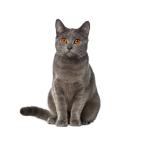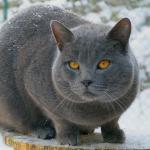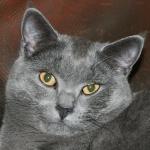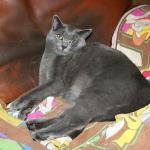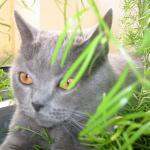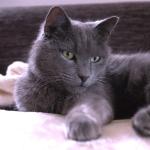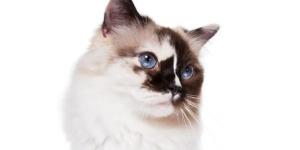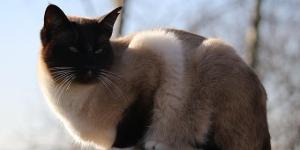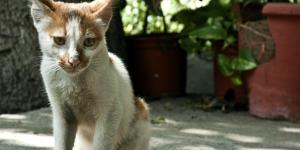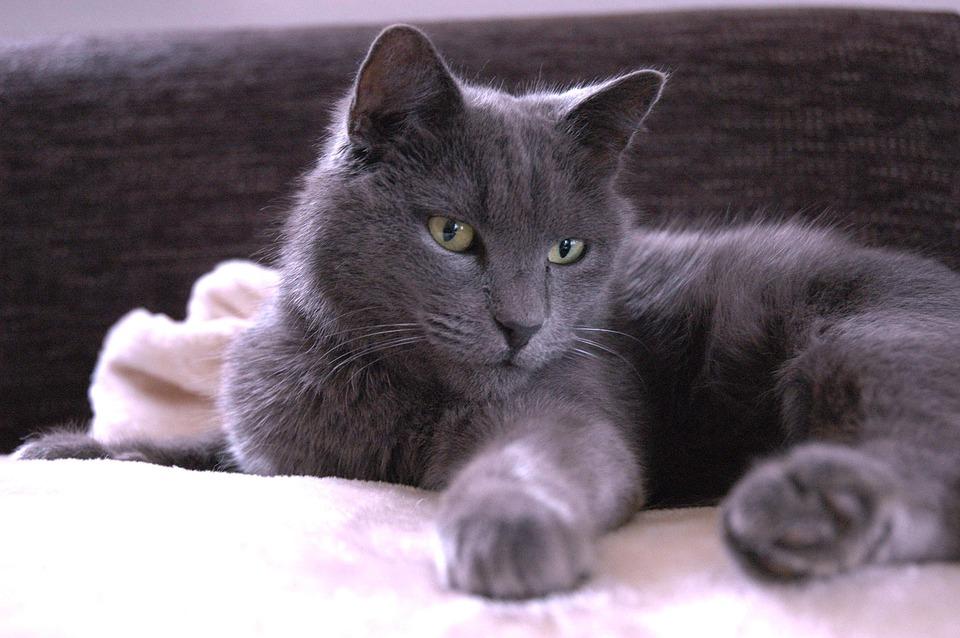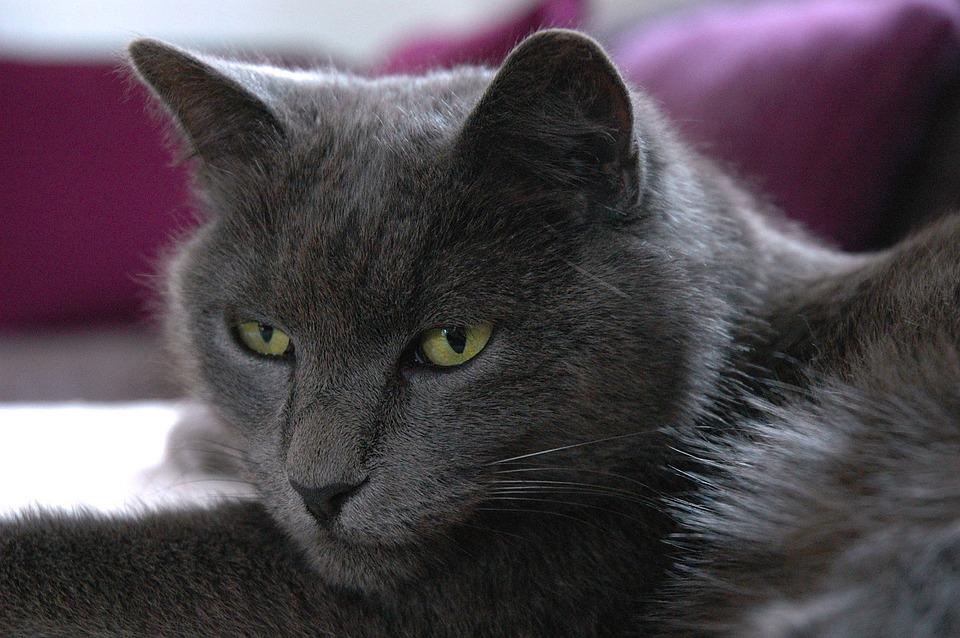Chartreux Cat
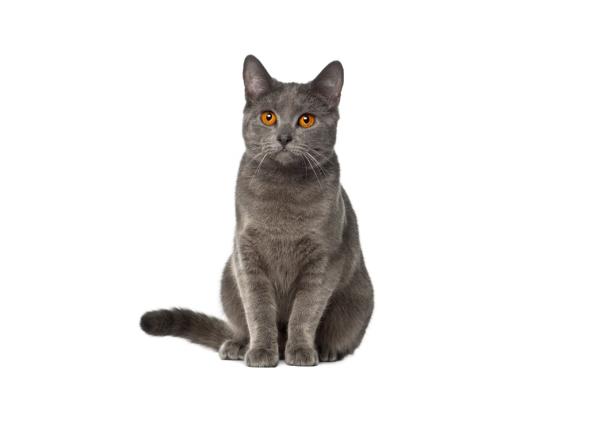
As one of the oldest cat breeds in the world, the Chartreux has an uncertain origin. What we do know is that they have a shared history with important historical figures such as Carthusian monks and revered French leader Charles de Gaulle. Whatever the exact origin of these felines, they are unquestionably adorable. They have a docile nature and affectionate character which wins the hearts of not only their guardians, but anyone who comes in contact with them.
In this AnimalWised breed file we explain everything you need to know about the Chartreux cat. We start with a general review of its history, bring you insight into their character and provide practical information about their care. It's vital if you are considering adopting one into your family.
- Europe
- France
- Category III
- 7-11
- 11-13
- 13-17
- 17-22
- 22-30
- 8-10
- 10-15
- 15-18
- 18-20
Origin of the Chartreux cat
Although unsure of the origin of the Chartreux cat, there are numerous theories which claim their beginnings. The generally most accepted one is that they originate in Western Siberia where they existed in some form millennia ago. The Siberian connection is why they have such a thick and dense coat, protecting them against the extremely cold weather conditions of the Eurasian Steppe.
Sharing their home with the grand monks of the French monastery ‘Le Grand Chartreux’, these felines are believed to have been bred by crossing Russian Blue cats. The theory is that the monks were looking for quiet feline companions which would not meow too much and distract them from their prayers. Although the monastery was founded in 1084, it is thought the descendants of these cats didn't arrive until the 13th century. It was then that religious combatants returned from the Crusades to the monasteries and devoted their lives to more pacific pursuits.
The cats also played a fundamental role in the monastery which bore their name. The Chartreux cat defended the monks' precious manuscripts from mice which would nibble on their pages, keeping the temple clean of these rodents.
Despite their storied history, it was not until the 1920's these cats were officially allowed to compete in cat shows. Due to the Second World War, this cat breed was in such decline they were almost extinct. A concerted attempt to maintain their lineage resulting in crossing with the British Shorthair and they survived.
It was not until 1987 that the International Cat Association (TICA) officially recognized the breed, with FIFE and CFA following shortly after. It is still unsure if this cat actually does originate with the Carthusian monks or if they are named after a type of wool called the piles de Charteux, which has a similar appearance to the cat's coat.
Physical characteristics of the Chartreux cat
Charteux cats come in a fairly wide range of weights and sizes. This is due to sexual dimorphism being much more marked in this cat breed than others, i.e. the differences between males and females are more pronounced. Males are generally medium to large sized cats, weighing up to 7 kg and having a fairly broad chest. Females are medium sized and don't exceed 3 to 4 kg. Their tail is of a medium length, but the base is much wider than the tip which is itself quite rounded.
Regardless of sex, the Chartreux has a robust and muscular body. At the same time they are relatively agile and flexible. Their extremities are strong, but fine in relation to the rest of their body. Their feet are wide and round, with paw pads of a blue-gray tone.
The Chartreux's head is an inverted trapezoid shape with soft edges and a solid jaw. Their cheeks are quite fleshy and they display a permanent smile due to the shape of their mouths. Their ears are medium sized and have rounded tips. Their nose is straight and wide, the forehead high and flat with deep searching eyes below. It is this expressiveness and golden gaze which makes them so beautiful to look at. A strange curiosity is that Chartreux cats are born with blue-green eyes which eventually turn to the golden color they are recognized for at around 3 months of age.
Their coat is very dense with a double layer. This woolly sub-layer keeps them insulated from cold and humidity, but its always short and always blue.
Chartreux cat character
The tender look of the Chartreux cat is appropriate as they are docile cats with a sweet and delicate nature. They adapt to almost any environment and can coexist peacefully with children and other animals. Although they are more affectionate with their family, they are quite a sociable and open cat. They can easily make friends with visitors and their pets as they are known for getting along well with dogs as well as cats.
Speaking of dogs, this breed has been compared on multiple occasions with canines. They can follow their guardian around the house, wanting to be with them at all times and seeking attention. They love to spend hours curled up on their guardian's lap and enjoying their company. This is why they are particularly well suited to people who spend a lot of time on their own.
Additionally, they are very intelligent animals. They have a balanced character and have almost inexhaustible patience as it is practically impossible to elicit aggression from a balanced Chartreux cat. They prefer to avoid confrontations and fights. If they see an aggressive situation coming along, they are more likely to disappear and hide than confront an unpleasant situation.
Chartreux cat care
Due to the Chartreux's characteristic double layered fur, we need to brush them daily to get rid of dead hair and avoid potential hairballs. If not, they can trigger various problems such as intestinal obstructions and general hygiene issues. As hygienic animals, baths are unnecessary unless in emergencies. If we do have to bathe them, be extra thorough in drying them. If you leave their dense undercoat wet it can lead to health issues in cold weather.
Apart from the above specific care, we need to provide appropriate food and exercise. We also need to stimulate cognition with toys and intelligence games, otherwise they may grow frustrated. We also need to pay attention to cleaning their mouth and ears as well as provide general checkups.
Chartreux cat health
Despite being a relatively healthy cat breed, we should make particular considerations with the Chartreux cat. It has been shown that this cat breed can accumulate more cerumen (ear wax) than others. This is why we need to check with our veterinarian how to clean the cat's ears properly. If we do not have the right tools to clean the cat's ears safely, you should take them to a groomer or a vet to do it for you. You should also ask the vet to check them during their regular checkups which should happen every 6 to 12 months.
There is another disease which seems to affect this cat breed in particular. This is known as patellar dislocation and also affects breeds like the Bengal cat. This condition deteriorates the cartilage in their kneecaps which makes them easier to dislocate. We should keep an eye on their gait and ask the vet to pay attention to their limbs when doing an examination.
We must also be considerate of the amount of food we provide a Chartreux cat. They are known for a tendency toward gluttony, so being overweight and obese are concerns. This can affect other aspects of the cat's health such as mobility and kidney function. This can be avoided with a balanced diet and plenty of opportunity and engagement in exercise.
- Chartreux - Fédération Internationale Féline - Available at: http://www1.fifeweb.org/dnld/std/CHA.pdf
- Club du chartreux - Standard FIFE - Available at: https://www.club-du-chartreux.com/standard_fife
- Chartreux - Fédération Féline Française - Available at: http://www.fff-asso.fr/race/chartreux/
- Breed Profile: The Chartreux - The Cat Fanciers' Association - Available at: http://www.cfa.org/Breeds/BreedsCJ/Chartreux.aspx
Chartreux Cat photos
